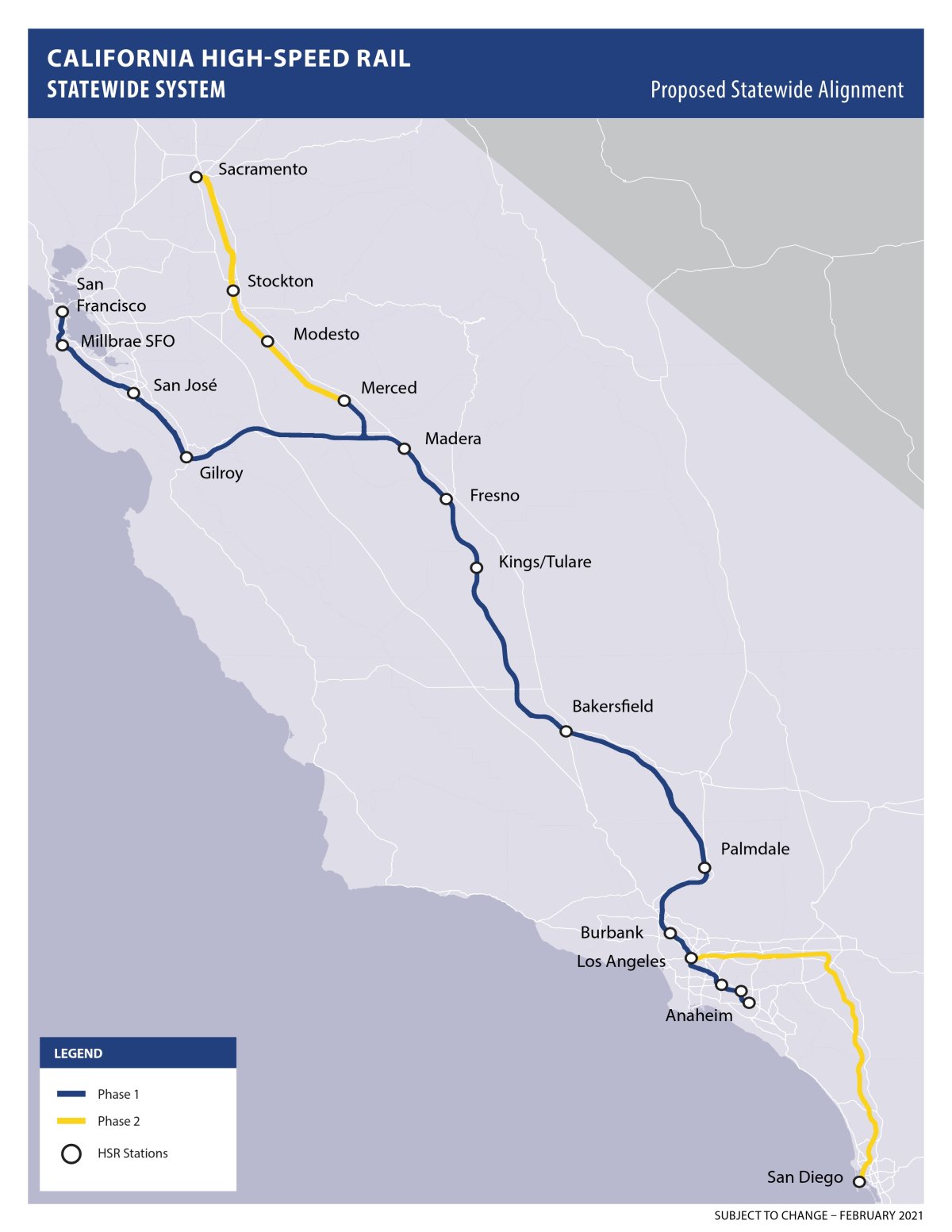California
PolitiFact – Does Texas really outproduce California in wind energy? Yes

U.S. Sen. Ted Cruz wants people to know that Texas — not California — is the country’s top wind energy producer.
“We produce a lot more wind energy in Texas than California does,” Cruz said in an interview this month with CNBC’s Last Call. “They produce a lot of hot air, but the wind energy is produced in Texas.”
Wind turbines are a common sight across Texas, but is Cruz correct that the state — long known for its oil and gas dominance — outproduces California in renewable wind energy?
Contacted for comment, Cruz’s spokesperson did not provide a response by our deadline.
PolitiFact examined U.S. Energy Information Administration data and found that Texas not only produces more wind energy than California but also is the nation’s top producer. Texas generated more than one-quarter of all U.S. wind-sourced electricity in 2022, leading the country for the 17th consecutive year.
Last year, Texas produced more than 114,000 megawatt hours of wind energy, nearly eight times more than California, which produced about 14,600 megawatt hours. Texas has more than 15,000 wind turbines, according to the Texas comptroller’s office, more than any other state in the U.S.
A megawatt can power about 200 homes during peak demand, according to the Electric Reliability Council of Texas, which manages the state’s power grid.
After Texas, the states generating the most wind-sourced electricity in 2022 were Iowa, Oklahoma, Kansas and Illinois.
Texas leads the nation in wind power generation for several reasons, said Tom Overbye, an engineering professor and director of the Smart Grid Center at Texas A&M University.
The state boasts extremely high wind speeds, particularly in North and West Texas, and along the southern Gulf Coast, Overbye said. For example, the average peak wind speed in El Paso in West Texas hit 35.9 mph in April 2022, the El Paso Times reported.
An abundance of open land in these regions makes the cost of developing wind farms relatively low. The state also offers a property tax exemption equal to the value of wind and solar energy devices.
Wind farms enjoyed strong bipartisan political support in Texas, at least in their early years, Overbye said. He pointed to the Texas Renewable Portfolio Standard, signed in 1999 by then-Gov. George W. Bush, which aimed to spur renewable energy development. In 2005, then-Gov. Rick Perry signed a bill that expanded renewable energy and improved the electric transmission infrastructure. Although Democrats have pushed green energy measures, including the Green New Deal, Perry and Bush are both Republicans.
Texas has also become a leader in solar power, Overbye said. In 2022, Texas was the country’s second-largest solar energy producer, after California, according to the EIA. This year, the state is adding more solar energy capacity than any state in the U.S, according to the agency.
Our ruling
Cruz said, “We produce a lot more wind energy in Texas than California does.”
Federal data shows that in 2022, Texas produced more wind energy than any other state, including California. That year, Texas produced more than 114,000 megawatt hours of wind energy, compared with California’s production of 14,600 megawatt hours.
We rate this claim True.

California
Lights back on after power outage in parts of Southern California

Watch CBS News
Be the first to know
Get browser notifications for breaking news, live events, and exclusive reporting.
California
How California’s high-speed rail line will advance in 2025

California’s high-speed rail project, which aims to connect San Francisco and Los Angeles with a 494-mile route capable of speeds up to 220 mph, aims to continue construction in 2025.
Phase 1 of the project focuses on linking San Francisco in the north to Anaheim via Los Angeles in the south, with plans to extend the line north to Sacramento and south to San Diego in Phase 2.
The California High-Speed Rail Authority, which is overseeing the project says it has already generated significant economic benefits, including creating over 14,000 construction jobs and involving 875 small businesses.
But despite its transformative goals, the project remains politically contentious, with critics questioning its costs and viability. It has been in development since voters approved funding in 2008 and has faced delays, cost increases, and shifting timelines.
Photo Illustration by Newsweek
Work Planned for 2025
In a statement to Newsweek, the California High-Speed Rail Authority outlined its planned work for 2025, which focuses on continuing construction in the Central Valley between Merced and Bakersfield.
The 171-mile segment between Merced and Bakersfield will be the first part of the line to be operational, with services expected to start between 2030 and 2033. Of that section, 119 miles are currently under construction.
Of the planned structures in the Central Valley section, 85 are underway or completed out a total of 93 on the segment. Work will continue on these structures as well as on the tracks capable of handling high-speed trains.
By the end of 2025, civil construction on the 119-mile segment currently underway is expected to be completed and construction will begin on the next stretches to Merced and Bakersfield.
In 2025, the authority also plans to advance design and begin construction on its stations in the Central Valley. It also expects to select a manufacturer for the trains.
Although the initial operating segment will only run 171 miles from Merced to Bakersfield, environmental clearances have been obtained for 463 miles of the 494-mile Phase 1 route, completing the stretch between San Francisco and Los Angeles. Only the Los Angeles-to-Anaheim section is still awaiting approval.

California High Speed Rail Authority
The Authority said it plans to publish its draft environmental impact report for the Los Angeles-to-Anaheim section in 2025, a key milestone for the eventual full-approval of Phase 1.
More than $11 billion has been invested to date, with funding sources including state bonds, federal grants, and proceeds from California’s carbon emission trading auctions.
The authority has not yet received funding to construct the segments westwards from the Central Valley to the Bay Area or southwards to Los Angeles.
Despite this, the authority said it was committed to pushing on.
“California is the first in the nation to build a true high-speed rail system with speeds capable of reaching 220 mph,” the Authority told Newsweek. “The Authority remains committed and aggressive in moving this historic project forward while actively pursuing additional funding.”
Political Opposition to the Project
Despite ongoing progress, the high-speed rail project continues to face political opposition, particularly from Republican leaders.
While President Joe Biden’s administration has invested billions in it since 2021, the incoming Republican administration, which will control the House of Representatives, the Senate, and the presidency, is unlikely to continue funding it at the same level.
Representative Sam Graves of Missouri, who chairs the House Transportation and Infrastructure Committee, has criticized the project’s costs and funding strategies.
In a statement to Newsweek, Graves described the rail line as a “highly troubled project” and raised concerns about its reliance on government subsidies.

California High Speed Rail Authority
He pointed out that the current funding supports only a limited segment between Merced and Bakersfield, which he estimated will cost $35 billion.
“Full cost estimates [for Phase 1, between San Francisco and Anaheim] now exceed $100 billion and growing,” Graves said, calling for a comprehensive review of the project before any additional funding is allocated.
“California high-speed rail must have a plan and prove that it can wisely and responsibly spend government money—something it’s failed to do so far.”
The congressman stated that over the next four years, he would oppose any further federal funding for the California high-speed rail project.
Instead, Graves advocated for efforts to redirect unspent funds and focus on improving existing transportation infrastructure, such as Amtrak.
Graves also emphasized the need for private-sector involvement in future rail projects, citing Brightline’s operations in Florida and Las Vegas as a successful example of private investment.
While Graves acknowledged the potential of high-speed rail, he argued that the California project has failed to meet the necessary criteria for viability and local demand.
The authority told Newsweek it would engage with the federal government to seek other funding sources.
“We continue to explore strategies aimed at stabilizing funding, potentially allowing the program to draw private financing and/or government loans,” it said.
California
Hawaii resident flies to California to clear name from identity theft

HONOLULU (HawaiiNewsNow) – A Honolulu man who had his identity stolen had to fly to California to clear his name. He acted quickly to stop his bank account from being completely drained.
Jamie Dahl said he’s speaking out because identity theft can happen to anyone and he’s not sure how his personal information was stolen.
“I’m still mystified how he pulled it off,” Dahl said.
In late November, Dahl found some fraudulent charges on his credit card so he ordered a replacement card.
Two weeks later, he says went to his online bank account with Bank of America and discovered his identity had been stolen. The hacker had account access for instant money transfers.
“My phone number is missing, my email is missing, my mailing address. I live in Honolulu. It’s Mililani,” Dahl said.
He knew he was in trouble.
Dahl said two days after his discovered his identity had been stolen, he had to fly to California to clear his name because there are no Bank of America branches in Hawaii.
He brought several forms of ID to re-authenticate himself.
“It was just an incredible ordeal,” he said.
“The bad guys are shopping just like everybody else for Christmas,” said former HPD Deputy Chief John McCarthy, who investigated cybercrime.
McCarthy says check your bank account daily and having a local bank is helpful.
“If you don’t have a local bank, you are that much father away. I’ve had problems with banks that are on the East Coast,” he said.
“It takes a day to communicate with them, a day to get a response. That’s a lot of damage you can do in 24, 48, 72 hours,” McCarthy added.
McCarthy says most banks have streamlined their re-authentification process so you don’t have to see them in person.
Hawaii News Now contacted Bank of America to find out their process and are waiting to hear back.
Copyright 2024 Hawaii News Now. All rights reserved.
-
/cdn.vox-cdn.com/uploads/chorus_asset/file/24924653/236780_Google_AntiTrust_Trial_Custom_Art_CVirginia__0003_1.png)
/cdn.vox-cdn.com/uploads/chorus_asset/file/24924653/236780_Google_AntiTrust_Trial_Custom_Art_CVirginia__0003_1.png) Technology5 days ago
Technology5 days agoGoogle’s counteroffer to the government trying to break it up is unbundling Android apps
-

 News6 days ago
News6 days agoNovo Nordisk shares tumble as weight-loss drug trial data disappoints
-

 Politics6 days ago
Politics6 days agoIllegal immigrant sexually abused child in the U.S. after being removed from the country five times
-

 Entertainment6 days ago
Entertainment6 days ago'It's a little holiday gift': Inside the Weeknd's free Santa Monica show for his biggest fans
-

 Lifestyle6 days ago
Lifestyle6 days agoThink you can't dance? Get up and try these tips in our comic. We dare you!
-

 Technology1 week ago
Technology1 week agoFox News AI Newsletter: OpenAI responds to Elon Musk's lawsuit
-
/cdn.vox-cdn.com/uploads/chorus_asset/file/25672934/Metaphor_Key_Art_Horizontal.png)
/cdn.vox-cdn.com/uploads/chorus_asset/file/25672934/Metaphor_Key_Art_Horizontal.png) Technology1 day ago
Technology1 day agoThere’s a reason Metaphor: ReFantanzio’s battle music sounds as cool as it does
-

 News2 days ago
News2 days agoFrance’s new premier selects Eric Lombard as finance minister



















